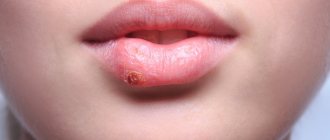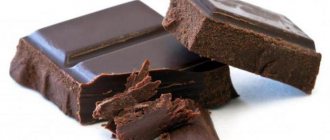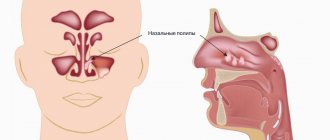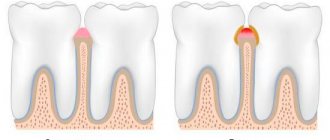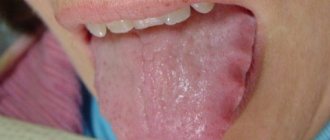Factors contributing to the formation of bubbles:
- Oral diseases: caries, pulpitis, periodontitis, stomatitis;
- Unbalanced diet;
- Allergy to toothpaste or mouthwash;
- Injuries;
- Poor hygiene;
- Hereditary predisposition;
- Hormonal imbalance;
- Immunity impairment;
- Alcohol and nicotine addiction.
Watery blisters on the mucous membrane in some cases can indicate the occurrence of serious diseases. Such manifestations occur with tuberculosis, syphilis or diabetes. Therefore, if such a pathology occurs, it is recommended to immediately make an appointment with a doctor and undergo the necessary examination. The first sign is the sensation of a strange object in the mouth that is in the way.
Blisters on the labia
Blisters appear at the sites of insect bites (fleas, lice, etc.).
They are characterized by itchy rashes, the severity of which depends on the type of insect and the sensitivity of the bitten person.
Scratching the elements can lead to infection.
Spontaneous urticaria appears as itchy, sometimes burning, blisters.
The state is called:
- taking certain medications
- eating certain foods
- concomitant diseases (chronic gastrointestinal pathologies, diabetes, leukemia, etc.)
- pathological pregnancy, menopause, etc.
The elements first have a pale pink color, which becomes white as the swelling increases.
Usually such blisters disappear within 24 hours.
Symptoms
- Painful sensations when eating occur if a bubble has formed in the gum area or on the tongue;
- Pain when talking or smiling appears when a formation occurs on the inner surface of the lip;
- Pain in the throat area occurs if the bubble is located at the root of the tongue.
Transparent and bloody blisters can be not only inflammatory in nature. If the formation does not cause pain and is not accompanied by swelling, then you should consult a dermatologist. It is not recommended to treat yourself in such a situation, as it can be dangerous to health.
Symptoms of stomatitis and its classification
If a child has a white sore on the inside of his lip, it is better to take him to a dentist for an examination to prevent negative consequences. Most often, the disease is diagnosed in children from one to 3 years of age; it is slightly less common in infants. Preschoolers and schoolchildren encounter the disease extremely rarely. The peak incidence usually occurs in the spring, when everyone feels their immunity weakens.
Experts distinguish 4 types of stomatitis: traumatic, infectious, allergic and chronic. First, small ulcers appear on the child’s lips, and then swelling of the mouth and lips becomes noticeable. The mucous membrane takes on a bright red color. Then the marks begin to spread to the tongue, palate and cheeks. Often they are the result of tissue injury from braces, a plate or a damaged tooth.
The appearance of bubbles indicates the infectious nature of the disease. Formations can make themselves felt on the face (on the nose, cheeks and lips). Such manifestations linger for several days, and then turn into traces of erosion, bringing with them headache, joint or muscle pain, as well as enlarged lymph nodes. Additional symptoms of stomatitis are dryness and burning in the mouth. Pain occurs when eating food. In extreme cases, the papillae located on the tongue may lose sensitivity.
Treatment methods depending on the cause:
- If the formation occurs due to a viral infection, then treatment will be based on the use of antiviral drugs;
- If the cause is injury, then it is necessary to eliminate the consequences and rinse the mouth with antiseptics;
- If an allergic reaction provokes an illness, then you should find out what the irritant is and not use it anymore. The doctor will also prescribe antihistamines;
- If a large bloody bubble has formed, then surgery is performed. After this, the doctor prescribes medications for rapid tissue regeneration and restoration.
Types of pimples on lips
Small pimples on the lip may indicate the presence of a cosmetic problem, and also indicate the development of pathology in the body. Identification of the trigger mechanism is possible by studying the nature of focal neoplasms and accompanying symptoms.
Rapidly enlarging blisters form with herpes. The contents of the neoplasms are exudate. A liquid substance is formed due to the activation of the virus.
The trigger mechanism for pathology is:
- stressful situations;
- immune system failure;
- mechanical injury;
- cold.
The disease brings discomfort. It is characterized by pain and itching. Purulent pimples also form due to impaired functionality of the sebaceous glands. The pores begin to become clogged with secretions. Dead cells are concentrated in them, causing secondary infection.
Initially, the pimple looks like a red dot. Then a white tumor forms in the center, indicating the accumulation of purulent contents. Later the abscess bursts. The wound begins to heal. The process is accompanied by pain.
Small white pimples on the lip are formed due to clogged pores when using low-quality cosmetics and poor hygiene. The head of the tumor is dense and cannot be removed mechanically. There is no pain or redness.
Pimples form due to stomatitis. The disease is caused by viruses and yeasts. Initially, white pimples form, inside which exudate gradually accumulates. Small ulcers form at the site. Treatment is carried out on an individual basis.
White pimples covering a larger area on the lips indicate the presence of pathology of the internal organs. The functionality of the liver and adrenal glands is usually impaired. Stress and depression also contribute to the formation of tubercles.
Other lesions on the labia
Bulla
A bulla is a huge pimple on the labia, a blister with a diameter of more than 5 mm.
Such formations in most situations are a symptom of serious skin lesions - bullous dermatoses.
For example, bullous pemphigoid is an autoimmune skin disease.
With it, itchy spots and papules first appear, and in their place blisters later develop, gradually turning into erosions.
tubercles
Tuberous dermatoses are rare.
Tend to progress to ulcerative formations with subsequent scarring.
They can be detected in cutaneous tuberculosis, pyogenic granuloma and tertiary forms of syphilis.
Nodes
Nodes are deeply located formations of dense consistency.
They do not exceed five centimeters in diameter and are rarely localized in the genital area.
Diseases manifested by the formation of nodes include:
- lymphangioma is a benign tumor that arises from the lymphatic vessels
- hidradenoma – benign tumor of the sweat gland
- lipoma – benign tumor of adipose tissue
- tertiary syphilis, etc.
A separate problem is pathologies in the area of the Bartholin glands.
They are located symmetrically at the base of the labia majora.
When the lumen of the gland is blocked, secretions accumulate in it and a cyst forms.
If infectious agents penetrate into the lumen, the development of bartholinitis (inflammation of the gland) and abscess (painful node with a purulent cavity) is possible.
External and internal reasons for the appearance
A pimple in a woman’s intimate area will not just pop out. You may not even notice the pimple, so it is important to visit your personal gynecologist once a year. Household pathogens include:
- Synthetic underwear does not fit. This fabric does not allow moisture to pass through and is poorly ventilated, thereby provoking the growth of bad bacteria on the labia.
- Hypothermia of the internal genital organs, private wearing of skirts in winter, insufficient tightness of tights can lead to hypothermia in intimate places due to impaired blood circulation.
- Overheating of the body can provoke the proliferation of bacteria.
- Inflammation of hair follicles. When shaving and sugaring, the skin is mechanically injured and irritation begins.
- Poor hygiene or frequent washing wash away the protective microflora. Incorrectly selected care products for delicate areas can cause a rash.
- Allergic reaction to powder, pads, soap or synthetics.
- Hormonal changes.
- Abuse of unhealthy diet, a lot of sweets, flour.
These causes are easy to eliminate, the rash will go away without medical help, just follow the rules of hygiene and watch what you eat.
It’s worse if viral pathogens settle in the intimate area:
- herpes in the genitals;
- human papillomavirus;
- hormonal disorders;
- infections acquired through sexual intercourse;
- staphylococcus;
- untreated candidiasis;
- side effect of vaginal suppositories;
- weakening of the immune system.
Sakania Luiza Ruslanovna
Dermatovenerologist, cosmetologist, trichologist
Ask a Question
Be sure to start treatment, a viral rash does not require delay.
Plaques on the labia
If a pimple appears on the labia, its size exceeds 1 cm, and in some cases, the skin in the affected area is thinned and whitened, we can talk about such primary elements as plaques.
Plaque lesions in women are typical for the following pathologies:
- neurodermatitis
- seborrheic keratosis
- lichen planus
- lupus erythematosus
- atopic dermatitis
- vulvitis candidiasis
- psoriasis
- Bowen's disease
- lichen sclerosus, etc.
With a disease such as candidal vulvitis (thrush), pimples on the labia and mucous membranes accompany the main manifestations.
These are curdled moderate/heavy discharge, swelling, redness.
Itching, which intensifies after sexual contact, a hygienic shower, during sleep, irritation, and a burning sensation in the perigenital area are also characteristic.
The problem is caused by the activity of yeast-like fungi of the genus Candida.
Lichen sclerosus - otherwise white spot disease, lichen sclerosus, vulvar kraurosis.
It appears in the form of clearly defined light spots, plaques, papules (“white pimples”) on the labia, in the inguinal folds, and vulva.
The formation of bloody blisters and erosions is possible.
Scarring often leads to fusion of the labia minora.
Bowen's disease is an intraepidermal formation (carcinoma) in the form of a sharply limited plaque with an uneven surface.
Usually detected in old age, it can develop into squamous cell carcinoma.
Pustules on the labia
Usually a pustule, otherwise a purulent pimple on the labia, does not exist for a very long period and may not even be noticed by the patient.
Superficial pustules quickly turn into crusts, while deep ones can form ulcers/erosions.
A group of dermatoses based on purulent inflammation of the skin is called pyoderma.
Pustular lesions are characteristic of:
- folliculitis
- impetigo
- hidradenitis
- syphiloid Sevestra-Jacquet and others.
Impetigo is a small superficial abscess with a convex red border.
The most common causes of the condition are staphylococci (80% of episodes) and streptococci.
A type of streptococcal impetigo in infants is post-erosive syphiloid Sevestra-Jaquet.
A problem arises with poor hygienic care for well-fed children as a result of the irritating effect of urine and feces.
Folliculitis is an inflammation of the hair follicle caused by bacteria, fungi, etc.
Deep folliculitis is called a boil.
Boils are inflamed, swollen pimples on the labia, cone-shaped with a necrotic core.
After the rod is separated, an ulcerative lesion develops in its place.
The recurrent appearance of numerous boils occurs with furunculosis.
A conglomerate of boils is called a carbuncle; it is a dense, up to 10 cm in diameter, node with pus.
Hidradenitis is a purulent inflammatory lesion of the apocrine glands that develops in the genital area, navel, anus, nipples, and axillary area.
In an infant, papulo-erosive streptoderma may appear on the labia, skin of the perineum, buttocks, and thighs - dense bluish-red pimples.
